Whether you are prepping your Corvette to roll across the auction block or display at a show, a spotless engine shows how important and well-maintained your Corvette is. Filthy engines are more apt to retain heat and make it difficult to detect small leaks. Dirt and dust cause pulleys and belts to squeak from undue wear. Worst of all, it just doesn’t look good.
Since the 1997 and newer Corvette engines use one ignition coil per cylinder, you can clean the engine without worrying about water damage. Ignition distributors can be troublesome during engine cleaning, even with early cars, and problematic with the 1990-1996 LT series engines.
Annual cleaning makes the procedure simple. A garden hose has enough pressure to remove any dirt, dust, and debris safely. Direct at the engine block or cylinder heads only. Compressed air or a yard blower will help remove water from tight spaces to help prevent corrosion. There is no need for a high-pressure washer or steam cleaner; steam cleaning will cause condensation, and pressure washers can force water into places it shouldn’t be, making it difficult to remove.
You’ll want to park your Corvette overnight, where the engine cleaning will occur. After you have parked, do not start the engine. The engine must be at ambient temperature with no heat buildup to achieve the best results. All electrical components and connectors are weatherproof, so direct water will not cause corrosion or damage. Electronic components can condense moisture internally when cold water hits the surface if the engine is slightly warm.
You will want to remove plastic engine covers before applying cleaner. Remove the air filter intake duct and cover the throttle body opening with duct tape. Check the air filter element or service a high-performance washable element. Remove air cleaner housing or cover opening to prevent water intrusion. You may be surprised by the debris built up on the radiator and A/C condenser when you remove the cover for better access. You can also flush out radiator debris with the garden hose. Don’t forget to clean all of the covers as well. Corrosion may begin if water is under the engine covers. Once everything is rinsed, use compressed air to blow off the water.
If the underside of the hood is dirty, wash it first, then rinse the exterior well. Apply cleaner to the engine and entire compartment. Spray the engine with cleaner, including the inner fenders and radiator area. Apply cleaner as many times as necessary; however, the cleaner won’t be as effective if the engine is wet. Keep all areas moist with cleaner until you are ready to rinse, approximately ten minutes. There aren’t any coated components that will discolor, so citric acid cleaners will work without causing damage.
Silicone helps repel water and does an excellent job of cleaning plug wires. Once cleaning is complete, apply spray silicone lubricant on a clean cloth and then wipe on the plug wires and spray the hood hinges. Finish by using high-temperature grease at the hood latches.
Once the engine bay is clean, you’ll be proud to show it off at any show or cruise night. It makes a good impression on a potential buyer to see an engine that has been appropriately maintained.
Remember, you’ll want to keep things cool to avoid plastic part damage. Keep a water hose handy to rinse the exterior if any cleaning product gets on the paint. Washing in the direct sunlight can discolor plastic covers if the cleaner dries on the pieces.
Story and photos courtesy Chris Petris
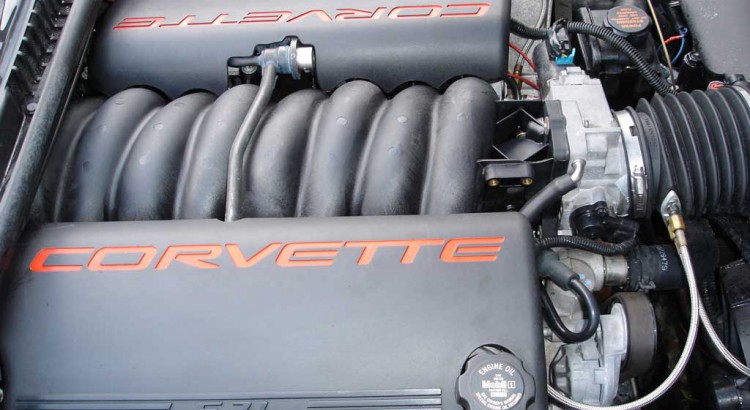
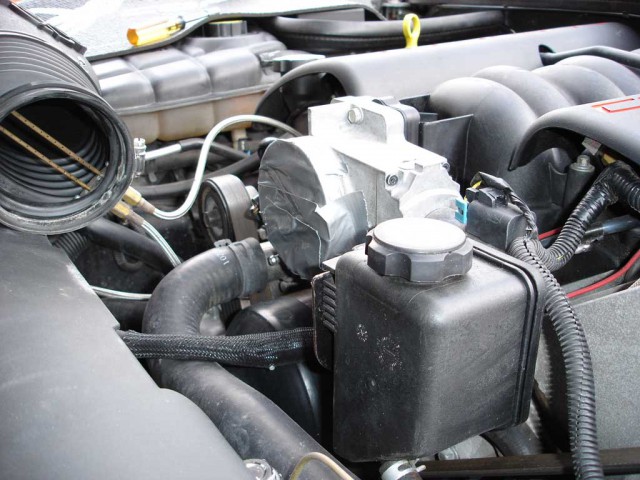

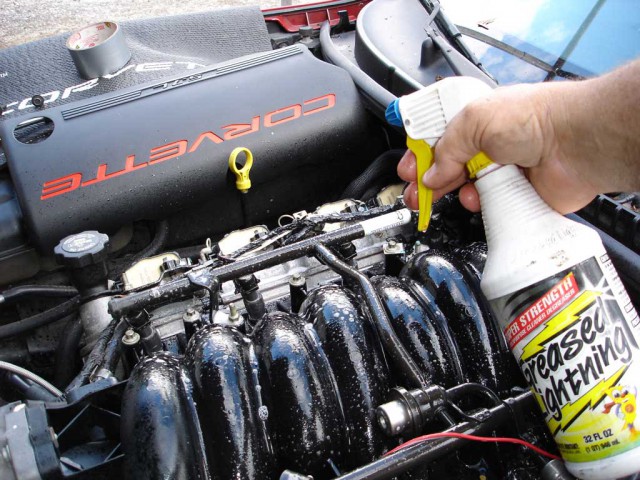
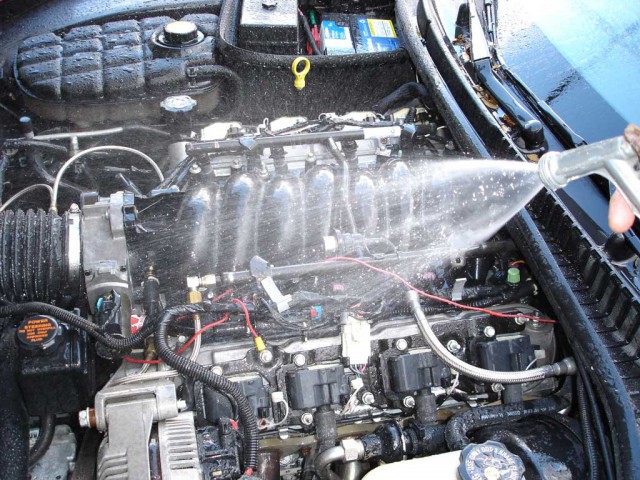
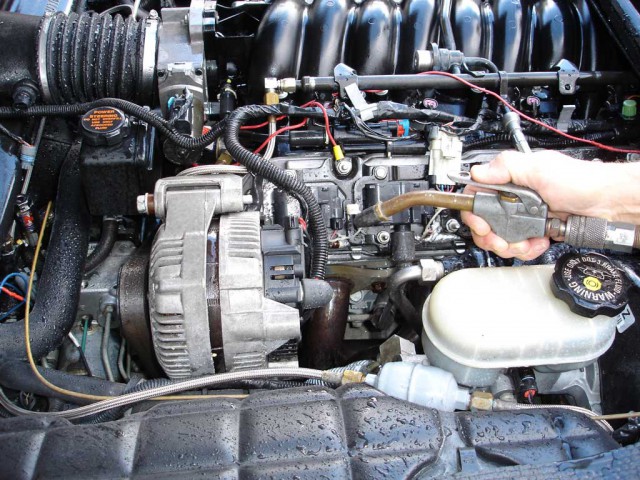
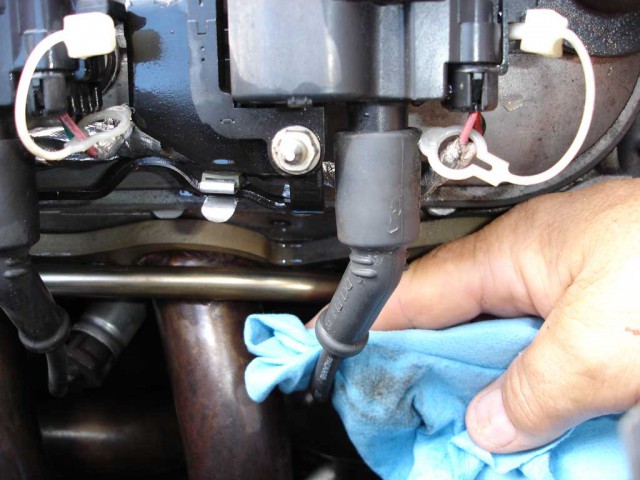
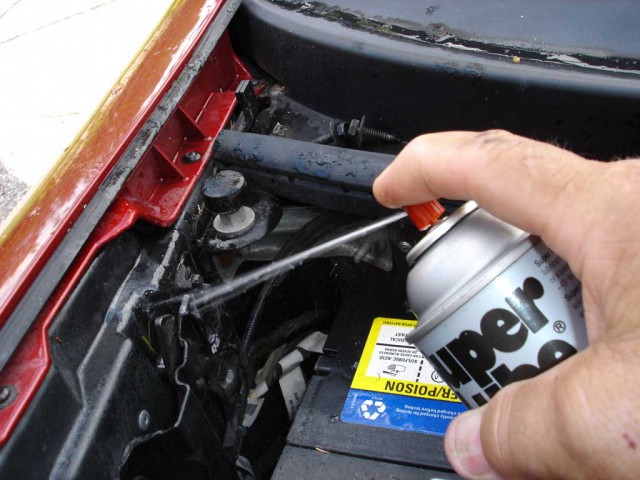
What waste of time. Can’t inquire about the cover over the cabin filter. It’s MISSING!
Thank you so much for this cool post.
I have a 2014 C7. Occasionally my back up camera will not work along with the cruise control. I’m curious on what the issue may be and if they could be related
Sean
Yes I have a C6 2008 Corvette I replace the rotors and brakes but I still have the squeaking noise from my brakes what can I do to fix that somebody had told me I need ceramic brake pads what do you think is the problem
When I start my C5 and let it run it makes a squeaky sound and when I turn on the AC the sound stops until I accelerate. Sometimes the sound will stop after I’ve driven the car awhile. I’m not sure if it’s the pulley (AC) or what. Can you give me some advise as to what you think it could be? Thank you.
First step I would do is open the hood and try identifying where the noise is coming from. If unable to identify then I would recommend taking the car to a certified Corvette technician.
I am a Minnesota resident and getting ready to store my C6 till April. Recommendations appreciated. Does it need to be placed in a heated garage like I have kept both of my C5 and C6 in the past with a battery tender?
A battery tender is the key to storing any vehicle during winter.
I use WD 40 lightly sprayed and then wipe it all down, looks like new after.
MAAAAAAN, I wish I had read all this before having the engine in my ’98 C5 pressure washed! Now the wipers operate whenever they want to and I get a strange whining noise under the dash that is intermittent and sound like a sound between a baby crying and a geiger counter. The damage is done and I will NEVER AGAIN allow water under my hood. Any way to stop these obscene noises?
I had the same problem with the windshield wipers on my 99. It seems they (engineers) put the motor in a ‘bowl’ and it has a small drain hole in bottom, a leaf or an acorn will stop it up and then the motor starts doing things on it own. I had the mechanic put multiple holes on the ‘bowl’ about the size of a nickel so it could drain better.
The C5 has “utters” that have to be removed and cleaned. Go to U Tube and it will tell you how to remove and clean them. Two on the drivers side on the firewall windshield drain, if not cleaned it will short out the wiper motor and one on the passenger side, will have to remove the battery. If this one is not cleaned water will leak into the passenger side carpet.
Check the plastic motor gears for the headlights. I had to replace mine with metal ones. Made the noise you describe.
My C7 engine cover lettering paint is needing to be refreshed. Where can I find the exact red/ orange paint?
Use a majic marker.
Great advice all around. Low pressure and hand washing followed by the silicone treatment is pretty foolproof. There are a lot of small openings that can accumulate water and cleaners. The space by the radiator is quite the debris trap and a crevice tool on a vacuum is just about the right fit when used carefully. My 04 Roadster gets this treatment spring and fall. The engine covers can be tricky on the driver’s side especially. A little silicone on that braided hose can help the cover slip off.
I spray everything under the Hood with STP tire foam. Let it set for bout 15 minutes the mist excess off. Then take dry micro rag and wipe down then air dry with leaf blower then one final wipe down. It’s cheap and the STP foam cuts dirt film build up and leaves all black parts nice and semi glossed. It also is a non greasy formula that will not make belts slip. The leaf blower is equivalent to a 500 mph wind tunnel but unlike an air hose and forced air from a compressor does not force air in unwanted areas. Sounds like almost too simple but you’ve got to try it. Used to work at a bike shop as a weekend hobby and detailed a lot of motorcycles and ATVs this way no scratches and took about a half can for a bike and whole can for ATV. Note: cover windshield to prevent overspray and will not hurt painted surfaces.
I have a C5 and a El Camino with a LS1 and basically use the same procedure as 1-7 with great success. On the C5 I cured overheating problem using step 2, the area between the radiator and condenser collected a lot of trash, problem solved.
I wipe my engine and other accessible areas under the hood with a damp cloth when I wash the car and it looks great. What is all the fuss about?
How do you remove the plastic engine covers?
They just pop off but be careful when removing the driver’s side. You have the braided fuel line that passes through the FRC and it requires you to flex the cover opening around the line.
I have never been a fan of turning a high pressure hose under the hood of a car or truck with all of the electrical boxes, solenoids and in some cases even part of the energy management systems are under the hood. But in the case of the electronically managed systems with the coil packs I would not want to pressure wash any of this type vehicle.
Low water pressure and hand drying after is the key. If you’re still not comfortable with that, trying using a rag and engine degreaser.
I’ve been told not to wash motor because of getting water to the knock sensors. I took my car to dealer for pinging on hard acceleration, the first thing they asked me if I had pressure washed my engine. I haven’t and hate a dirty engine compartment, wish someone could clear the big question up.
I wouldn’t recommend pressure washing. Low water pressure and hand drying after is the key. If you’re still not comfortable with that, trying using a rag and engine degreaser.